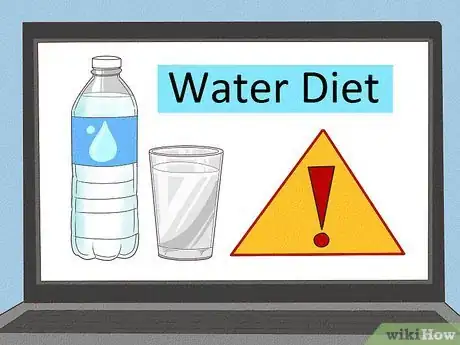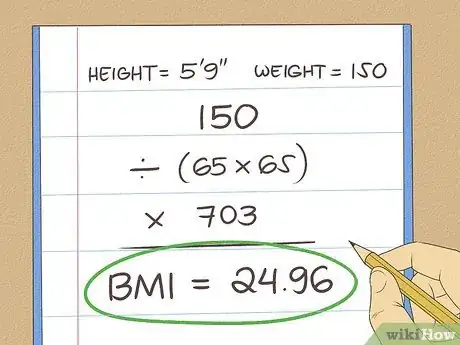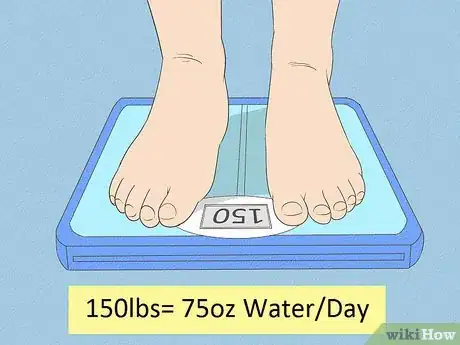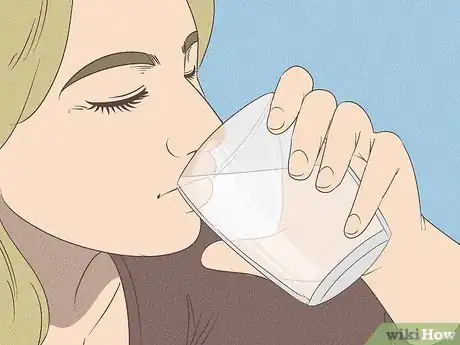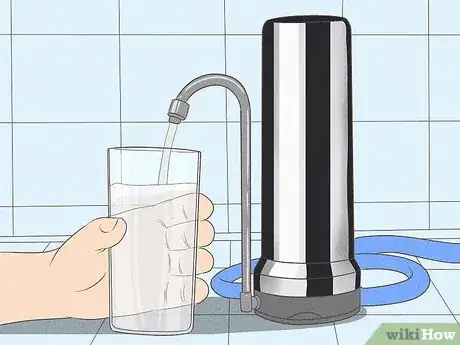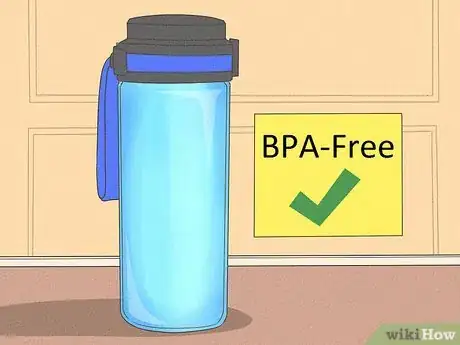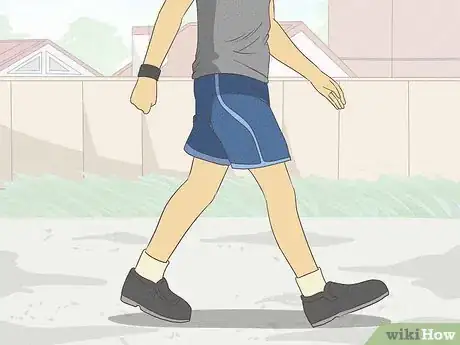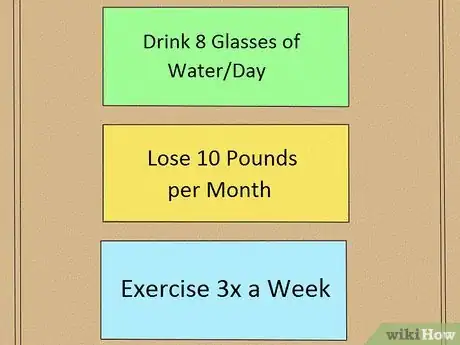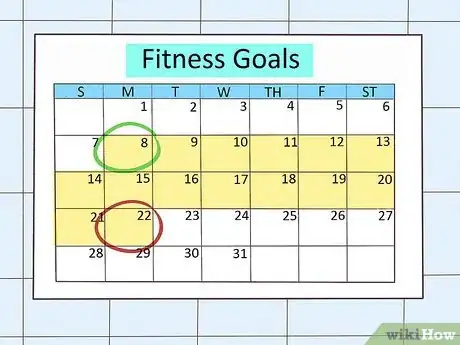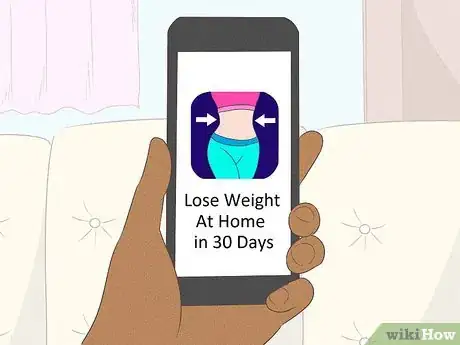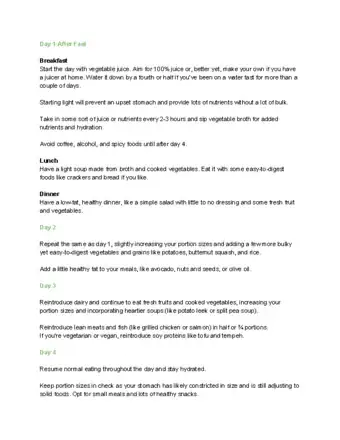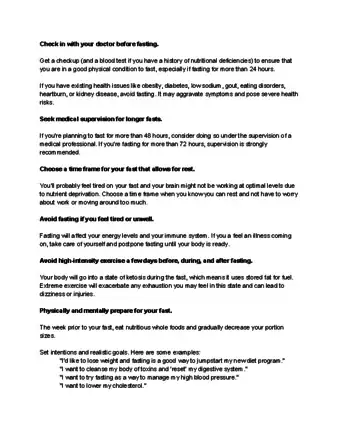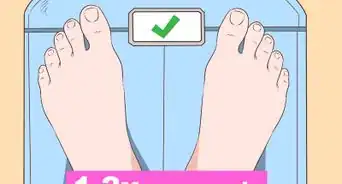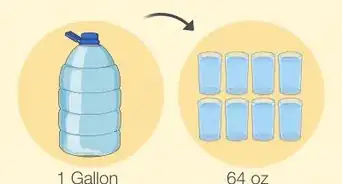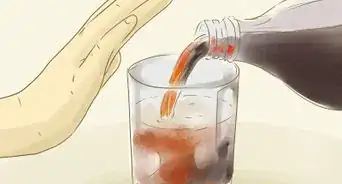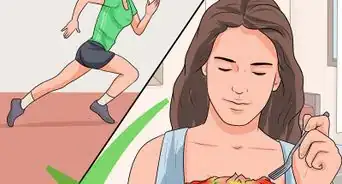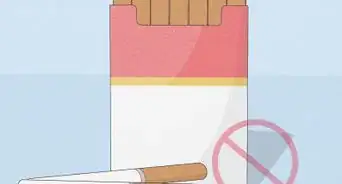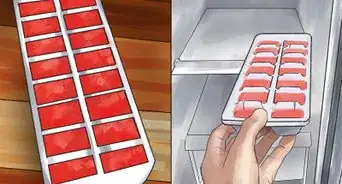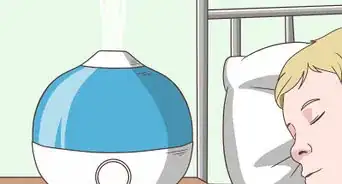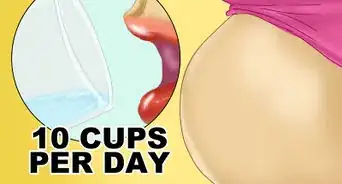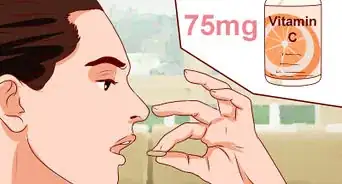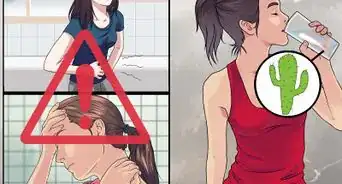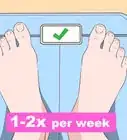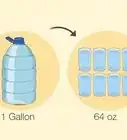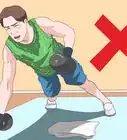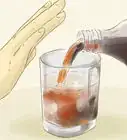This article was co-authored by Adrienne Youdim, MD. Dr. Adrienne Youdim is a Board Certified Internist specializing in medical weight loss and nutrition and founder and creator of Dehl Nutrition - a line of functional nutritional bars and supplements. With 10+ years of experience, Dr. Youdim uses a holistic approach to nutrition that blends lifestyle changes and evidence-based medicine. Dr. Youdim holds a BA from the University of California, Los Angeles (UCLA) and an MD from the University of California, San Diego (UCSD). She completed her residency training and fellowship at Cedars-Sinai. Dr. Youdim holds multiple board certifications awarded by the American Board of Internal Medicine, the National Board of Physician Nutrition Specialists, and the American Board of Obesity Medicine. She is also a Fellow of the American College of Physicians. Dr. Youdim is an Associate Professor of Medicine at UCLA David Geffen School of Medicine and an Assistant Professor of Medicine at Cedars-Sinai Medical Center. She has been featured on CBS News, Fox News, Dr. Oz, National Public Radio, W Magazine, and the Los Angeles Times.
There are 12 references cited in this article, which can be found at the bottom of the page.
This article has been viewed 318,024 times.
There are tons of variations of the water diet out there, but which one will actually help you lose weight? Moreover, how do you do a water diet safely? We've put together a guide to help you plan a water diet that'll be safe and realistic for your lifestyle. Keep scrolling to learn exactly how much water to drink and how you can use this diet to reach your weight loss goals.
Steps
Getting Ready to Lose Weight
-
1Consume 2 glasses of water before each meal and follow a low carb diet. There are many variations on this diet, ranging from all-out fasting to just making sure your daily water is cold. However, researchers found that people who drank water before a meal lost about 5 pounds more than those who skipped the water.[1]
- The water diet is best for a short amount of time. It is safest when combined with a normal diet, and can be dangerous when combined with fasting.
- The water diet may not be safe for everyone. When doing a water fast, you risk symptoms of low blood sugar like dizziness and fatigue, not to mention constipation, dehydration, and an intolerance of cold temperatures.[2] If you know you struggle with low blood sugar, the water diet may not be for you.
- This diet tends to be a "yo-yo" diet, meaning that once you lose the weight, as soon as you go off of it, the weight comes back.
-
2Set a realistic goal. When setting out to lose weight, you need to know where you are and where you want to be. Take the time to make some measurements (such as weighing yourself) and check standards for your body's healthy weight (such as BMI), and then set your goals from here.
- Weigh yourself. Once you see your current weight, you'll be able to set accurate weight loss goals.
- Check your BMI (body mass index). BMI can tell you how healthy your weight to height ratio is. Someone who is 5’9” and weighs 150 pounds would do this math: [150 ÷ (65x65)] x 703 = 24.96. This BMI of 24.96 is in a normal weight range. [3]
Advertisement -
3Get a checkup. You may check your BMI at home, but don’t start a new weight loss program without consulting your primary care physician. He or she will be able to more accurately evaluate your BMI and make fitness and diet recommendations.
- Tell your doctor about your water diet plan so he can suggest safe dietary recommendations. Everyone has different physical requirements, and seeing a doctor will prevent you from unnecessarily harming yourself.
Losing Weight
-
1Drink half your body weight. The amount of water you consume overall each day is up to you, but experts recommend drinking half your body weight in ounces (that is, if you weigh 150 pounds, drink 75 ounces of water a day).[4]
- If you forget to drink water before meals--an inevitable occurrence since you are trying something new--don't beat yourself up about it. Just try again at the next meal. You'll get the hang of it.
- You should be urinating every couple hours under normal circumstances. If you go all day without having to use the restroom, you're probably under drinking.[5]
-
2Drink water often. Drink it both first thing when you wake up and 30 minutes before you eat a meal. The feeling of fullness you get when filling your stomach with water prevents you from overeating.
- Drink after meals. Contrary to rumors that drinking while eating is bad for you, drinking after eating actually aids in digestion and prevents constipation.[6]
- There is some interesting data suggesting that thirst and hunger cues can get mixed up. Sometimes what people perceive as hunger is just thirst, which can cause people to overeat when what they really need are fluids.[7]
- Drink after exercising. You need to replace fluids, even if you’re not noticeably thirsty. Athletes should drink about 1.5-2.5 cups of water beyond the recommended amount (half your body weight in ounces).[8]
-
3Decide what kind of water. Tap water gets a bad rap for having chemicals in it, but the EPA directly supervises its production. Bottled water must follow a few regulations, but the EPA can’t guarantee its safety like it can with tap water.[9] If your home has a filtration system in place, use it, but don’t stress about having access to filtered water.
- Even though bottled water sales have surpassed those of coffee, milk, and juice, bottled water is terrible for the environment and some cities have started taxing it and removing it from their governments.[10] Tap water is just as safe to drink, it's free, and does not harm the environment to consume.
- Home water filtration systems can sift out some things in tap water, like chlorine, but none of them can remove all water contaminants. Plus you have to maintain these systems or they will grow contaminants, defeating the purpose.[11]
-
4Get a water bottle. To keep water at your fingertips all day, invest in a good BPA-free water bottle, whether plastic, metal, or glass.
- You don't have to purchase a water bottle, but you do need to keep up with how many ounces of water you're drinking each day. Perhaps designate a cup at work and one at home and use those instead of a water bottle.
- When eating out, take advantage of the pre-meal drink order and ask for water. Make sure you sip your glass down two times before the meal is brought out.
-
5Add some light exercise. Your focus on the water diet is drinking water to lose weight, but exercise helps burn calories. If you already have a workout routine in place, don’t change it for the water diet. If you don’t, begin by walking several times a week before starting in on more strenuous exercise.
- Only exercise if you are also eating. Exercising while doing a water fast will deplete your metabolism even more, making you vulnerable to the effects of low blood sugar, which can be dangerous.
Meeting Your Goals
-
1Set fitness goals. Goal setting keeps you motivated and helps you decide what things work and don’t work. For example, make a list of things you want to accomplish physically. If you want to lose 10 pounds in a month, write this down somewhere you can look at it every day.
- You have to estimate how much weight you will lose on the water diet in order to set a clear goal. For example, in the study we mentioned above, researchers found that subjects lost 15.5 pounds over the course of 12 weeks when drinking 2 glasses of water before each meal.
-
2Get a wall calendar. Hang it where you’ll see it, like the kitchen. Mark beginning and end dates for your diet.
- Even if you have your fitness goals mapped out elsewhere, like on a piece of paper or on your phone, having a wall calendar posted keeps your goals visible. This is key when you're standing in the kitchen and reaching for an unhealthy snack.
- If you find the water diet too extreme, you can always go back to simply responding to your body's natural thirst cues to decide when to drink.[12]
-
3Add a fitness app. You look at your smartphone every day—why not turn it into a weight loss motivator? Apps like MyFitnessPal help track your water, food, and calories burned each day. Studies show that documenting food and exercise helps people lose more weight than people who don’t.[13]
- Some people add the convenience of a fitness tracking bracelet so they don't have to think entering data into a phone (such as the FitBIt). These bracelets can track your movement and measure your sleeping habits, among other things.
-
4Reduce caloric intake. The goal of the water diet isn’t to count calories, but to put your body in weight loss mode, you do still need to consume fewer calories than you burn. The point is to require your body to pull energy from its fat stores.[14]
- Record every bite you eat in a fitness app. It might surprise you how much you really eat in a day, and motivate you to eat less.
- If you forget to record anything, just go back and make your best guess. Even estimated data is better than no data when you're trying to generate quantifiable results.
- Keep in mind that the reason the water diet is labeled "yo-yo" is because when you drink water instead of eating, your body tends to take nutrients from your muscles rather than fat. This depletes your metabolism, requiring you to maintain an extremely low calorie diet that isn't sustainable in order to keep the weight off.
Safety Precautions and Ways to Ease Back into Eating
Warnings
- It is actually possible to drink too much water, although it’s rare. It’s called hyponatremia, and it can be prevented by following your body’s thirst cues, as well as noticing signs of weight gain and puffiness during a physical activity.⧼thumbs_response⧽
References
- ↑ http://healthyeating.sfgate.com/much-water-need-daily-lose-weight-7576.html
- ↑ http://www.fitday.com/fitness-articles/nutrition/healthy-eating/is-trying-a-water-diet-worth-it.html
- ↑ http://www.cdc.gov/healthyweight/assessing/bmi/adult_bmi/index.html
- ↑ http://health.usnews.com/health-news/blogs/eat-run/2013/09/13/the-truth-about-how-much-water-you-should-really-drink
- ↑ Adrienne Youdim, MD. Board Certified Internist. Expert Interview. 11 September 2020.
- ↑ http://www.mayoclinic.org/healthy-lifestyle/nutrition-and-healthy-eating/expert-answers/digestion/faq-20058348
- ↑ Adrienne Youdim, MD. Board Certified Internist. Expert Interview. 11 September 2020.
- ↑ http://www.medicaldaily.com/drinking-too-much-water-can-be-deadly-new-guidelines-healthy-water-consumption-warns-340604
- ↑ http://www.webmd.com/women/home-health-and-safety-9/safe-drinking-water
- ↑ http://news.nationalgeographic.com/news/2010/03/100310/why-tap-water-is-better/
- ↑ http://www.webmd.com/women/home-health-and-safety-9/safe-drinking-water?page=4#1
- ↑ Adrienne Youdim, MD. Board Certified Internist. Expert Interview. 11 September 2020.
- ↑ http://www.thedoctorwillseeyounow.com/content/dieting/art4520.html
- ↑ http://www.cdc.gov/healthyweight/calories/
About This Article
Before you start a water diet, check with your doctor to make sure you’re healthy enough to try this type of diet. When you’re ready to start the diet, drink half your body weight in ounces each day. For example, if you weigh 150 pounds, you’ll need to drink 75 ounces of water throughout the day. It’s especially helpful to drink water right before meals, which will help prevent you from overeating. Besides drinking water, add some exercise to your routine to help you lose weight. You can start by taking walks several times a week, and gradually move on to more strenuous exercise. To learn how to set weight loss goals for your water diet, read on!
